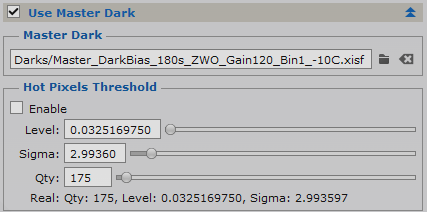I have the ASI533 though I have not yet had time to analyze it properly yet. I have done that for my ASI2600MC and came out with numbers that agree with ZWO. Unfortunately, I do not have PI, and I don't know what the results shown in these tables above mean. However, I added the 294 to my excel summary of my 533, not from my data, but from ZWO's data.
Clearly the 533 is a better camera in terms of lower read noise, and much lower dark current and dark noise. My first point is that even with the higher dark current of the 294 the dark current is less than 2 adu (16 bit), only 0.3 adu for the 533. Note that dark noise is the square root of dark current (all in adu), this is the physics, it is known as Poisson noise. For 180 second subs dark noise is insignificant with respect to read noise for the 533, but is contributing to noise for the 294.
It wasn't clear if the comparison shown in the tables above was for master darks with bias subtracted. A bias of 10 (called the offset or sometimes brightness) in the settings will give a baseline adu of 100 in the darks, unless it is subtracted. So if the bias is still there it is dominating the signal in the dark. If it weren't for the bias, the average value of the dark level would be 0, plus less than 2 adu of dark current, so an extremely long signal.
This does cause confusion as the noise in the dark frame is not the same as the dark noise, which is unfortunate naming.
The dark current is challenging to measure, should be done strictly in a totally dark area to avoid any stray light, and use many very long exposures to get a good value. Biases need to be taken as well and subtracted, again a lot of good biases are needed. Finally, I did not even mention pattern noise, which is actually a fixed signal from defects in the sensor, such as hot and cold pixels, etc. This can add to the signal level, and is delt with by subtracting biases or darks from each other. My experience with my other ZWO camera is you can trust there numbers.
Hope this helps
Rick






